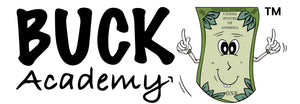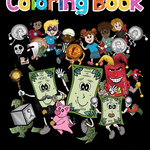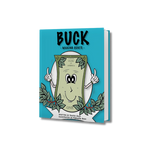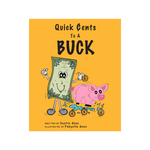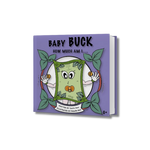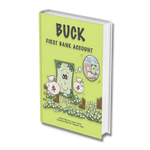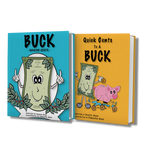You have no items in your shopping cart.
Cultivating good money habits for your children can start at the age of 2 and setting monetary milestones is critical to their financial safety and longevity in adulthood.
Here at Buck Academy, our purpose is to show the importance of learning about money starting at a young age; creating a future abundant in sound financial individuals and contributing members in our economic society.
And it all starts with you.
Ages 2-3
As a preschooler – it is important to start teaching them the importance of patience.
For instance, I’m sure your toddler has asked you for a cookie, instead of immediately giving them one, ask them to wait 10 minutes for two cookies instead. Encourage them to have patience and exercise that daily with them – and as always, lead by example.
The benefits of teaching your children delayed gratification will prove helpful as they get older and start managing their finances.
Ages 4-5
We know – preschoolers are too young to understand the concept of money. However, it is a great age to start showing your child how to count, and use basic math skills! Studies show engaging in simple money-based math activities with toddlers significantly increases their awareness of money in years to come.
Make it fun and give your child a mixture of coins. How many are there? What are their names? What numbers are on them? What do those numbers mean? Along with improving their math skills, they will learn the name, value of each coin, and its worth.
Ages 6-8
Researchers and experts say that the proper and usual amount of allowance is $1 per year of age. So, if your child is 6, their weekly allowance is $6. If your child is 15, their weekly allowance would be $15. Experts also state that allowances shouldn’t be tied to household chores and duties. Allowances should be used as a tool to teach your child about managing their money, not as a bribing tool.
Around 8 years old you can start teaching your child what things cost within your home as a form to educate. Have your child sit down with you and make a small budget and shopping list. By now your child is advanced enough that they can easily understand the concept of money coming in and going out. This is an optimal age to explain; money made at work — is used for bills, foods, shelter, etc. to support your household. Let them help you do simple math, like adding cents and single-digit amounts.
Ages 9-12
Now is a great time to open a small savings account for your child. This gives your child a sense of ownership of their money. By this age, your child is old enough to understand the concept of money, and how to save for what they really want, or may need. For every dollar that they contribute, consider offering $1 to match it. Include them in this process of opening an account, making deposits, and watching their account grow.
This age group is also able to understand the use of a credit or debit card. Experts recommend being transparent and educational when teaching our youth about the pro’s and con’s of electronic purchases. For Example, sit with your teen and open your wallet to review what cards are used for what expense. Show them the differences between debit and credit cards. Explain simple differences such as, if you use your debit card — it takes money out of your account that is there. However, if it’s a credit card, that is borrowed money from the bank and has to be paid back on time — and what are the consequences if it is late being paid back.
Though there are laws to protect our children from advertising agencies, and marketers, our children are continuously targeted via social media, magazines, tv, radio stations, and many other outlets — oftentimes, without us even knowing it. What better way to educate your child than by example? Trendy things are only often cool because advertisers paid to make them appear to be that way. Explain how marketing works by giving them a relatable example.
Ages 13-15
At age 13, your once child is now officially a teenager! Now is the start of teaching them the basics of adulthood. Teaching our children that price isn’t always the determining factor during the mist of buying decisions. Teaching them to buy smart — and spend their money wisely. This is the opportunity to teach your children the difference in quality products, cheap products, and how to spend the most wisely.
By age 14 —Looks like your child’s spending habits exceed their weekly allowance. Now is the best time to show your children that you have to work to get what you want in life. And that the importance of having a job is met with the importance of having money in the bank for life fundamentals.
Now your child is 15 years old! It is the time to take your now young adolescent to the bank and open their first checking account. Soon they will be starting their first jobs, and wanting more freedom with the money they earn. Doing this allows them to learn the value of their own money, and how they can spend it in their own way.
Ages 16-18
Your child is almost out of the nest. By this age, your teen will start to be more active with friends. Continue to give them a sense of responsibility and teach them how to manage their money. Encourage a part-time job with a healthy work/school balance. Now they will learn how the value of an object bought is measured by the time you put in at your place of work. This helps them understand the value of work vs. money.
What Can You Take From This?
Live by example – lead by example.
The importance of teaching our children and youth about personal finances is clear. There is vital knowledge for them to be successful and independent thinkers when it comes down to making financial decisions. The way adults behave with our money often stems from how we were taught to handle finances as children. Let us give our children strong financial knowledge that will be sure to last them a lifetime.
